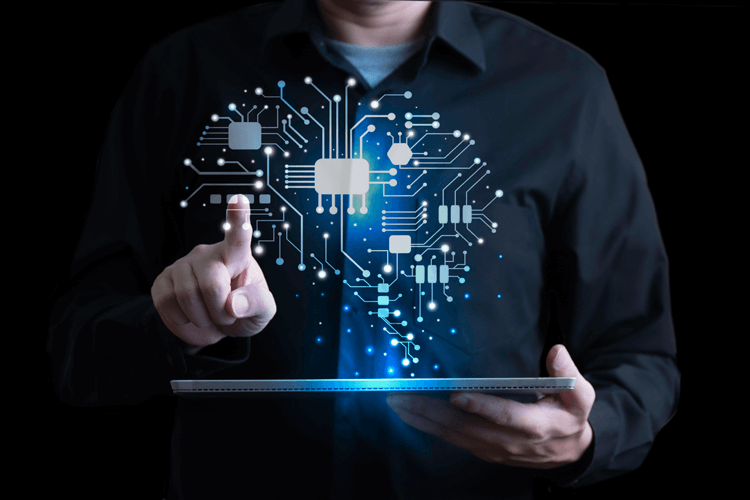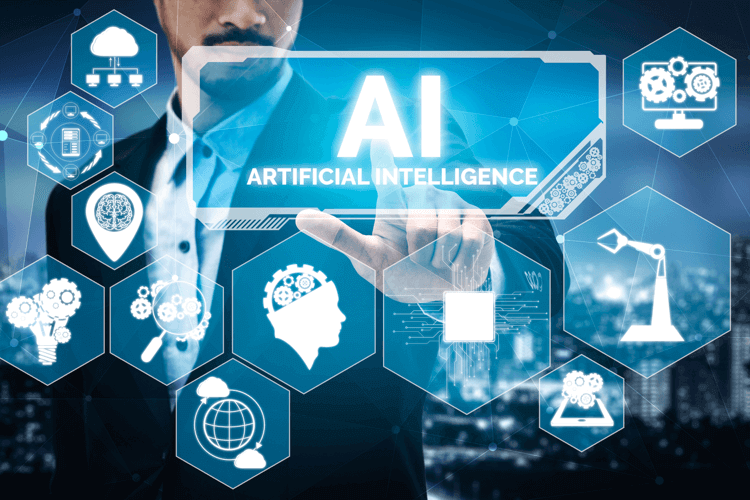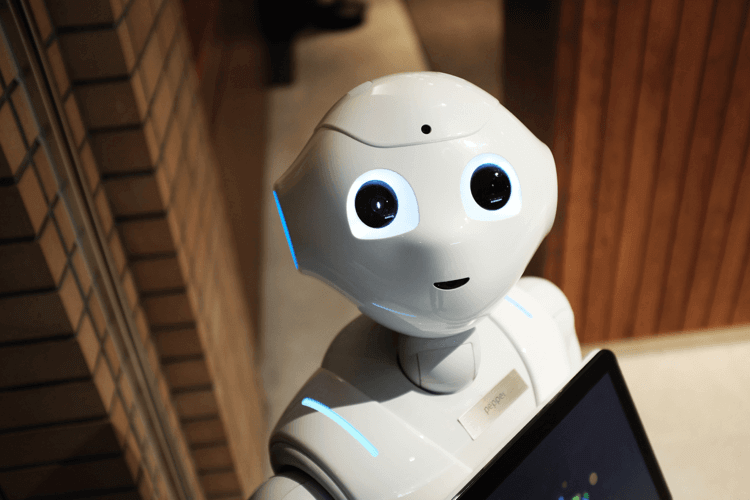Posted by Tech.us Category: AI Artificial Intelligence
We are a team of technology experts who are passionate about what we do. We LOVE our customers. We LOVE technology. We LOVE helping you grow your business with technology.
Artificial Intelligence Services
Machine Learning Solutions
Generative Al Companies
Robotic Process Automation
Natural Language Processing
Chatbot Development Services
Enterprise AI Solutions
Data Annotation Services
MLOps Solutions
IoT Solutions
Data Mining Solutions
Computer Vision Services
Custom LLM
AI Agents
Agentic AI Development
Custom Software Development
Enterprise Software Solutions
Software Development Services
Website Development Services
Software Product Development Services
SaaS Development Services
Mobile App Development Services
Custom Mobile App Development
IOS App Development
Android App Development
Enterprise Mobile App Development
Hybrid App Development
Software Development Outsourcing
Dedicated Development Team
Staff Augmentation Services
IT Outsourcing Services
Data Analytics Services
Data Analytics Consulting Services
Business Intelligence Solutions
Software Modernization
Application Modernization Services
Legacy System Modernization
IT Security Solutions
Cyber Security Solutions
Cyber Security Managed Services
HIPAA Compliance Cyber Security
Cloud Application Development
Custom Web Application Development
Cloud Consulting Services
AWS Cloud Consulting Services
Enterprise Cloud Computing
Azure Cloud Migration Services

POPULAR POSTS
01
How To Improve Document Processing Accuracy Using Document AI
02
The Guide to Chatbot Development & What to Seek while Hiring a Company
03
Understanding Natural Language Processing: The What? The How? and The Why?
04
11 Proven Benefits of AI Chatbots for Businesses in 2025
05
A Complete Guide to SaaS Product Development
Posted by Tech.us Category: AI Artificial Intelligence
In the past few years, AI (Artificial Intelligence) has gotten a lot of recognition, even through the COVID-19 pandemic. Today, there’s even more buzz in the technology industry regarding AI and the development around it.
And while you’ve seen what AI can be in the future through the silver screen, you might be surprised at just how far humans have come when it comes to creating artificial intelligence that copies not only people but other organisms too.
In this article, you’ll learn 13 things about artificial intelligence you may not have known.
Everyone knows that real pets are cuddly and lovable, but they don’t come without their setbacks. As we all know, pets need to be well taken care of, feeding them and cleaning them when needed.
Pet-bot developers, however, are confident that they can deliver AI-driven pets to the market by 2025. These “pets” will feel, look, and act just like their real counterparts, but won’t be as challenging to manage.

Research shows that most people prefer to hear a female voice compared to a male voice. Because of this, many companies opt to use a woman’s voice in their products, with Apple’s Siri, Amazon’s Alexa, and Microsoft’s Cortana as prime examples.
Whenever you ask them a question, you’re greeted politely and pleasantly.

In the late 1990s, Dr. Cynthia Breazeal built a robot head to recognize emotions by analyzing humans’ voice tone and body language.
Created at the Massachusetts Institute of Technology, the robot was named “Kismet,” which comes from a Turkish word that translates to “fate” or, in other times, “luck.” It was designed to be an experiment in affective computing and was able to recognize and stimulate emotions.

According to research, robots that have been damaged can tap into experiences used in stimulated lives to “heal” themselves. While it may sound like science fiction at first, a six-legged robot was able to adapt in just over a minute and continue walking even after two of its legs were no longer usable.
In this experiment, researchers found that such abilities could lead to more autonomous, effective, and robust robots.
In Canada alone, around 1,160,000 are out of a job as a result of the COVID-19 pandemic. And while AI can help reduce the costs in a business, it’s also forecasted to create many significant problems.
According to The Guardian, 85% of customer service jobs may be taken over by AI this year.

Everyone already knows that AI is built to be smart and calculating. But just how smart can they become? Because AI can learn things quickly, it’s no surprise that their intelligence can increase, just as it does in humans.
AI systems from 2013 had the intelligence level of a 4-year-old, so experts estimate that by 2029 AI systems will have the same intelligence as an adult human.
Some people believe that a romantic relationship between robots and humans should be made legal.
David Levy, a chess master and a notable figure in artificial intelligence, believes that marriage with a robot will be possible by 2050. Unfortunately, scientists haven’t created robots that are advanced enough for such activities.
Sophia is a life-like artificial intelligence developed by Hanson Robotics, a Hong-Kong based company. She was first turned on and revealed on February 14, 2016, and made her first appearance to the public the following month at SXSW (South by Southwest Festival) in Austin, Texas.
The AI “became” a Saudi Arabian citizen in October 2017 and is the first robot to get citizenship to any country. However, this sparked controversy as people question whether a robot should be given such rights.

On March 18, 2014, programmer and journalist Ken Schwencke created an algorithmic program to generate a short article automatically whenever an earthquake takes place. As a result, a robot could write an essay on an earthquake in California for the Los Angeles Times.
While you are already familiar with the voice recognition apps on your phone, you might not be aware that artificial intelligence also exists in your home. Usually taking the form of Amazon Alexa, pairing our phones with smart home systems accelerates the integration of AI systems in our rooms. The living room is the primary location for smart speakers and is followed by the kitchen, bedroom, and home office. Other rooms don’t usually need to call on Alexa as much.

Artificial intelligence has been able to detect tumors 99% of the time, according to research into identifying tumors in lymph node images. While the AI couldn’t get perfect results and occasionally misidentified white blood cells as cancer cells, such results are very promising to the future of treating cancer.
Everyone is already aware of autopilots for aircraft, but AI systems for cars are now being developed further to keep vehicles in a dedicated lane. These efforts are being studied so that robots can learn to assess and monitor roadside situations.
When an accident takes place, a person only has seconds to evaluate the situation and provide a response to get to safety. Robots, however, only need fractions of that time to avoid rear-end collisions and other road accidents.

Humans can create a work of art using their passion, love, taste, moods, and experiences, which should be things that a robot lacks.
However, a painting called “Portrait of Edmond Belamy” was recently auctioned for $432,500—and the artist responsible was an AI. Machine learning was applied, where the AI processed images that were already in existence and created its design based on them.
The primary intention behind creating artificial intelligence is to help people manage their businesses to get work done quicker and more efficiently.
However, with so many advances in the field so quickly, will AI end up doing more than just help you? Will they eventually take over the jobs and companies you’ve worked so hard to begin and maintain? Only the future will tell.


6 Facts About Artificial Intelligence That Will...

7 Horrible Mistakes You’re Making With Artificial...
Get Free Tips
NEWSLETTER
Get Free Tips
Submit to our newsletter to receive exclusive stories delivered to vou inbox!
Thanks for submitting the form.
RECENT POSTS

In-House vs Outsourced Software Development: A Strategic Guide for CEOs

What Are the Key Enterprise Software Development Considerations for...

7 Qualities to Look for in a Custom Enterprise Software Development...

How to Find the Best Custom Enterprise Software Development Company in 2026

5 Common Cloud Migration Mistakes and How to Avoid Them
We are a team of technology experts who are passionate about what we do. We LOVE our customers. We LOVE technology. We LOVE helping you grow your business with technology.
Our Services
Talk to US